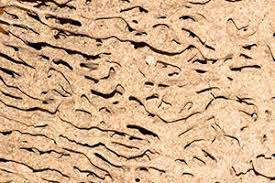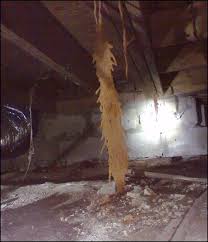5 Easy Facts About Termite Control Technician Job Description Shown
Biological pest control is a way of controlling pests like insects and mites by using other organisms.8 It relies on predation, parasitism, herbivory or other natural mechanisms, but typically also involves an active human management function. Biological control involves the introduction of natural enemies of the insect that are bred in the lab and introduced into the environment.
Ideally, the released organism will strain and survive, and provide long-term control.9 Biological control can be an important component of an integrated pest management programme. .


Indicators on Termite Control Techniques You Need To
Crop rotation can help control insects by depriving them of their host plants. It's an important tactic in the control of corn rootworm, and has decreased early season incidence of Colorado potato beetle by up to 95%.12
A trap crop is a crop of a plant which attracts insects, diverting them from nearby plants.13 Pests aggregated on the trap crop can be more easily controlled using pesticides or other methods.14 But trap-cropping, on its own, has often failed to cost effectively reduce insect densities on large industrial scales, without using pesticides, possibly due to the pests' ability to spread back into the main area.14.
Pesticides are applied to crops by agricultural aircraft, tractor-mounted crop sprayers or as seed dressings to control pests. However, successful control by pesticides is not easy; the ideal formulation has to be chosen, the timing is often crucial, the procedure of application is important, adequate coverage and retention on the crop are necessary.
This is very important in countries where there are natural reservoirs of pests and their enemies in the countryside surrounding plantation crops, and these co-exist in a delicate balance. Often in less-developed countries, the crops are well adapted to the situation and no pesticides are needed. Where innovative farmers are using fertilisers to develop improved crop varieties, these are often more susceptible to pest damage, but the indiscriminate application of pesticides may be detrimental in the longer term.15.

Termite Control Tenting Can Be Fun For Everyone
Pesticides are formulated to kill pests, but many have detrimental effects on non-target species; of particular concern is the damage done to honey-bees, solitary bees and other pollinating insects and in this respect, the time of day when the spray try this site is implemented can be important.17 The Popular neonicotinoids have been banned on flowering plants in certain countries Due to Their effects on bees.17 Some pesticides may cause cancer and other health problems in humans, as well as being harmful to wildlife.18 There can be acute effects promptly following exposure or chronic consequences following continuous low-level, or occasional vulnerability.19 Maximum residue limits for pesticidesIn foodstuffs and animal feed are put by many nations.20.
Forest bugs present a significant issue since it is not easy to access the canopy and monitor pest populations. In addition, forestry pests such as bark beetles, kept under control by natural enemies in their native range, may be transported large distances in cut lumber to areas in which they have no natural predators, enabling them to cause extensive economic harm.21 Pheromone traps have been used to monitor pest populations in the canopy.
Pheromone traps can detect the arrival of fleas or alert foresters to outbreaks. For example, the spruce budworm, a damaging pest of spruce and balsam fir, has been monitored using pheromone traps in Canadian woods for many decades.22 In some regions, such as New Brunswick, areas of forest are coated with pesticide to control the budworm population and prevent the harm generated during outbreaks.23.
Many unwelcome animals and their house create or visit in residential buildings, industrial sites and urban areas. Some contaminate foodstuffs, harm structural timbers, chew through cloths or infest kept goods. Some inflict great economic loss, others take diseases or cause fire dangers, and some are only a nuisance. Control of these pests has been tried by improving sanitation and garbage control, modifying important source the habitat, and using repellents, growth regulators, traps, baits and pesticides.